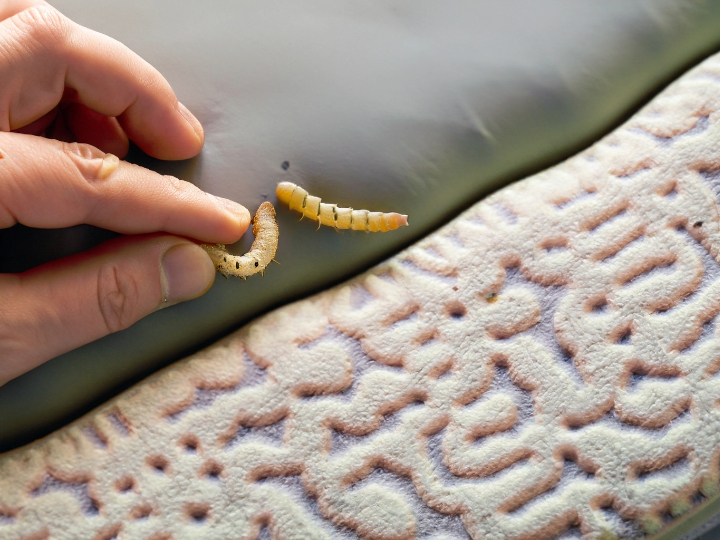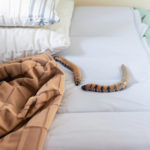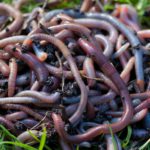If you’ve ever been unlucky enough to discover mattress worms in your mattress, the proverb “Good night, sleep tight, and don’t let the bedbugs bite” truly does hit you differently. Tiny worms that are white, brown, or grayish in color could be the larvae of various insect species. Moths, fleas, and carpet beetles are a few examples of this.
The most well-known way that textile moths, like clothes moths, lay their eggs is in the fibers of natural-fiber mattresses and bedding. The larvae that emerge from these eggs when they hatch resemble tiny worms. To stop more harm, protect your health, and keep your mind at ease, it’s critical to find and get rid of these bedroom pests as soon as you can.
Then, how do you eradicate mattress worms? Everything there is to know about the larvae of the clothes moth, also referred to as “mattress worms” or “bed worms,” will be covered in this comprehensive guide. We’ll also go over all of your frequently asked questions concerning worms in bedding and mattresses in detail. In this manner, you can clear your bedroom of any creepy crawlies and concentrate on having a restful night’s sleep!
Table of contents
What are mattress worms?
Any type of insect or parasite that resembles a worm or caterpillar and is discovered in bedding or within a mattress’ padding can be referred to as “bed worms” or “mattress worms.” Insect parasites like tapeworms might even fall under this category. However, rather than being parasites, the majority of worms discovered in mattresses or beds are actually insect larvae. However, there’s a chance that you have residual parasites if you have dogs or cats that sleep with you at night. These are the various types of mattress worms and what to look for when trying to identify them.

Mattress worms classifications
Carpet moths larvae
Case-holding All of your woolens and textiles serve as a food source for carpet moths, as they feed on animal-based fibers. The heads of the Carpet Moth larvae have a darker hue and are typically yellow or cream in color. In addition to being opaque, these moth larvae have the ability to wrap themselves in sack-like cases during the grub phase before pupating.
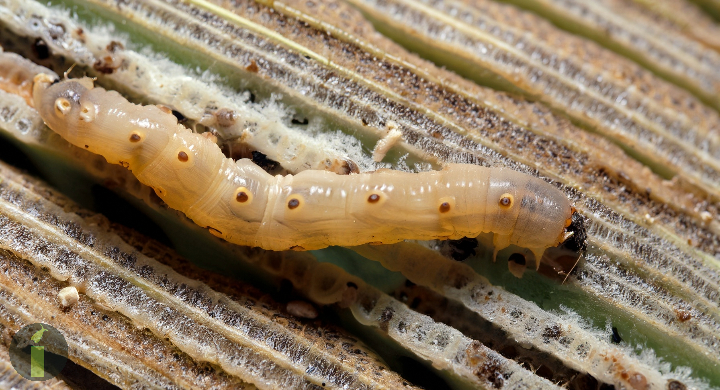
Clothes moths larvae
Common Clothes Moth larvae have darker head capsules and are typically glossy, white, or cream in color. While feeding, these larvae spin silken cases or webbing tubes. Their maximum size is one centimeter in length. Like carpet moth larvae, they feed on animal-based fibers like silk, wool, leather, and feathers that are made of the protein keratin.

Carpet beetles larvae
Depending on the species, Carpet Beetle larvae can have a variety of appearances. On the other hand, these larvae typically have coarse, tiny hairs on their bodies and are four or five millimeters in length. They can be distinguished from other kinds of insect larvae by their tiny hairs. Carpet beetle larvae can be brown, tan, or white, and they frequently have an oval or carrot shape.

Flea larvae
Flea larvae have a tiny worm-like appearance. But because they are so tiny, it can be challenging to identify them. Flea larvae typically have a c-shaped appearance and appear as tiny flecks in blankets or against contrasting surfaces like sheets or mattresses. The color of them can vary based on how long it has been since they have eaten, from pale gray to dark brown.

Identifying mattress worms
If your pets have been using your bedrooms often, that is a red sign. Cats that hunt mice outside may come into contact with worms, including roundworms, hookworms, and tapeworms. Numerous parasitic worm infections are also possible in dogs. These worms, or worm segments, are typically shiny, semi-transparent, and yellowish or white in color.
That said, the most common cause of mattress worms is generally insect larvae. These larvae, which can survive on their own outside of a host without drying out, are typically produced by fleas, carpet beetles, clothes moths, or carpet moths. These insects also have larvae that resemble caterpillars rather than real worms.

What do mattress worms look like?
Insect larvae have a variety of colors, including brown, tan, gray, yellowish, or white. Unlike parasitic worms, which only writhe around, insect larvae can move. Additionally, their heads and body parts are typically colored differently. For instance, the white bodies and brownish heads of carpet moth larvae. Larvae of the common clothes moth typically have tan heads and a pale yellow color. The typical color of carpet beetle larvae is brown or amber.

What do mattress worms do?
After emerging from their eggs, the larvae of insects such as carpet beetles and clothes moths start munching on the closest food source. The larvae may find food in your mattress if it contains any edible material inside or on top of it.
Over time, mattress worms can seriously harm your bedding, mattress, and any nearby textiles or clothes made of animal fibers. The larvae will eventually develop into adult insects, procreate, and start the cycle over. This is why it is crucial to get rid of an infestation at its source as soon as possible.
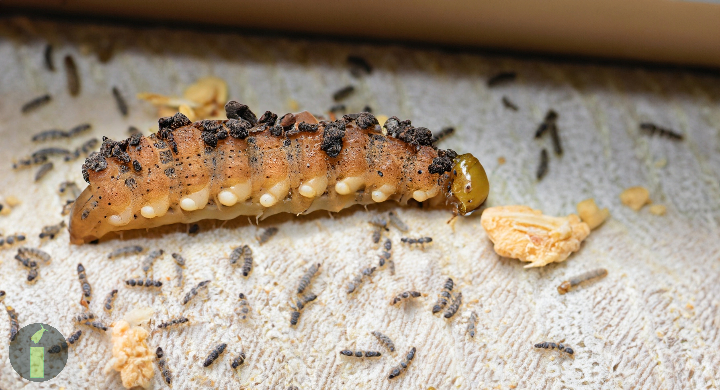
How do mattress worms originate?
You might find yourself wondering why you have mattress worms, where they originate from, and what initially causes mattress worms. All of these questions are valid, but the solutions can be a little more nuanced. For example, natural fibers like wool, feathers, or cashmere are used to stuff certain mattresses.Even though these premium materials can help you sleep soundly, they might also draw insects that eat these materials, such as clothes moths. This usually only occurs when the mattress is left outside in the weather.
On occasion, though, the larvae may have originated from eggs that were fastened to another item of furniture. For example, if you purchased a used rug from the thrift store, there may have been eggs laid by an adult female moth there.
Mattress worms can also originate from storage units, cluttered environments, and other situations. Insect infestations can be avoided by routinely cleaning sleeping areas, cleaning bedding, and storing mattresses indoors with plastic covers.
Furthermore, keeping food in or close to your bed could result in an insect infestation. Food should be thrown out before it goes bad and kept in sealed containers. This can aid in the prevention of mattress worms and other insects and their larvae.
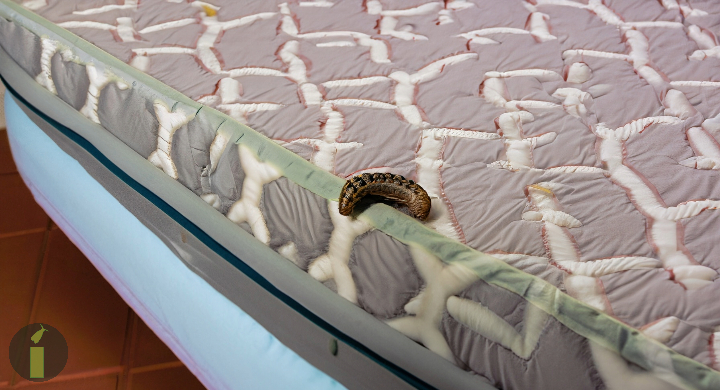
How to get rid of mattress worms?
Our 5-steps will guide you how you can get rid of mattress worms and get peaceful sleep at night.

Take out the bedding and raise the mattress
To begin with, you must remove the bedding from your bed and run a hot cycle in your washing machine. After that, raise your mattress so you can see beneath and around your bed. Determine which areas require vacuuming or cleaning. Additionally, look for indications of insect activity if you have a box spring.

A complete vacuum
Give your box spring and mattress a thorough vacuum. Additionally, you will need to vacuum under your bed’s feet, in all of the cracks and crevices, and around the headboard, bed frame, and moldings. Vacuuming will remove the majority of adult insects and larvae completely. Empty your vacuum bag or canister as soon as possible, and keep it far away from your house to stop the infestation from spreading.

Apply insecticide
Apply an insecticide spray to your mattress now. There are plenty of solutions that are reasonably safe to use around people and can be applied to fabrics and mattresses. Carpet beetles can also be killed by bed bug sprays. These sprays are safe to use on textiles and furniture, but they should not be consumed. Just make sure you carefully read the instructions.
Diatomaceous earth is an additional choice. Diatomaceous earth can be sprinkle-coated onto your mattress; it looks like powdered baking soda. After a few minutes of sitting, vacuum it out. Among people, children, and pets, this powder is safe. Diatomaceous earth is frequently even available in food-grade form. When diatomaceous earth comes into contact with insects, it suffocates them through their exoskeletons, causing suffocation of all sizes.
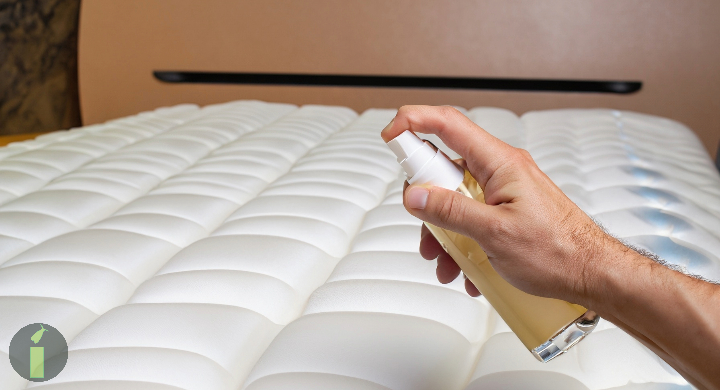
Tidy the entire space
If you’ve discovered an insect infestation in your mattress or bed, it’s also a wise idea to thoroughly clean your entire bedroom. Clean all textiles, give carpets a shampoo, and disinfect all surfaces. While cleaning, keep an eye out for any larvae you may have missed or potential sources of infestation. In this manner, you can guarantee that your room is bug-free and have a good night’s sleep.
Prevent Reinfestation
It’s time to stop these repulsive little bugs from ever returning. Purchasing a mattress encasement is one choice. If you missed anything when cleaning, these mattress covers that zip around your mattress will help shield you from any insects or eggs that hatch. They will also prevent bugs from getting into your mattress.
Next, caulk any gaps or fractures in your room that could allow insects to enter. Placing carpet and clothes moth traps is a smart idea as well, since they can help break the cycle of reproduction by capturing adult male moths that are actively breeding. Moth traps are an all-natural and incredibly successful solution that draw in male moths with the help of potent female pheromones on their sticky strips.
Read More: Plaster Bagworm, Nature’s Cunning Camouflage Artist
Frequently Asked Questions on Mattress Worms
Q1. What do mattress worms look like?
Often referred to as mattress worms, mattress worms are a group of pests and their larvae that have the potential to infest your bedding or mattress. They are not a particular kind of pest. Their larvae resemble worms because, unlike adult bed bugs and fleas, they have not yet grown into an insect with a hard exoskeleton.
Q2. How do you prevent mattress worms?
To ensure that there are no leftover larvae, wash all of your bedding in hot water. To help keep dust mites, mattress worms, and bed bugs at bay, purchase a mattress encasement. Using a mattress cover can reduce the wrinkles and seams around your mattress and help you vacuum in any eggs or larvae you might have missed.
Q3. How do I know if my mattress is infested with mattress worms?
Bruised bed bugs that leave rusty or reddish stains on mattresses or bed linens. Bed bug excrement, represented by dark spots (about this size), may bleed onto the fabric similarly to how a marker would. Little (1 mm) eggs and eggshells, as well as pale yellow skins that nymphs shed as they get bigger.
Q4. Where do mattress worms come from?
There are two ways that mattress worms enter your bed: either an adult parasite lays its eggs in or on the bed, or the worms are carried in by a person or animal that has previously come into contact with them. Because they spend so much time in beds, fleas and bed bugs are drawn to them.
Q5. How do I disinfect a mattress?
Using natural household cleaners or a commercial spray designed to eradicate bacteria and disinfect sweat stains, you can sanitize and disinfect your mattress. Bleach-containing sprays and solutions should be avoided as they may harm the mattress’s fibers. On the mattress, you can also use an enzyme cleaner spray.

